-
 bitcoin
bitcoin $114320.977035 USD
-0.40% -
 ethereum
ethereum $4152.439985 USD
-1.75% -
 tether
tether $1.000111 USD
-0.04% -
 xrp
xrp $2.843037 USD
-1.63% -
 bnb
bnb $1013.349380 USD
-1.62% -
 solana
solana $208.362767 USD
-2.10% -
 usd-coin
usd-coin $0.999783 USD
0.00% -
 dogecoin
dogecoin $0.232559 USD
-1.00% -
 tron
tron $0.333491 USD
-1.09% -
 cardano
cardano $0.806310 USD
0.19% -
 hyperliquid
hyperliquid $45.023720 USD
-1.59% -
 ethena-usde
ethena-usde $1.000819 USD
-0.06% -
 chainlink
chainlink $21.241249 USD
-2.11% -
 avalanche
avalanche $30.035416 USD
-0.66% -
 stellar
stellar $0.364984 USD
-2.05%
How to import a wallet to Trust Wallet using a private key?
Import your crypto wallet into Trust Wallet using a private key for full control, ensuring accuracy and security during the process.
Jul 01, 2025 at 02:42 pm

What is Trust Wallet and Why Use a Private Key?
Trust Wallet is a popular mobile cryptocurrency wallet that supports multiple blockchain networks, including Ethereum, Binance Smart Chain, and many decentralized applications (dApps). It allows users to securely store, send, receive, and manage their digital assets. One of the core functionalities of Trust Wallet is the ability to import an existing wallet using a private key, which gives users full control over their funds.
Using a private key to import a wallet ensures that you retain complete ownership of your cryptocurrency holdings. This method is often preferred when migrating from another wallet service or recovering access to a previously used wallet. It's crucial to handle private keys with extreme caution, as anyone who gains access to them can fully control the associated funds.
Understanding Private Keys and Their Role in Wallet Import
A private key is a unique alphanumeric string that grants access to a specific cryptocurrency wallet address. It acts as a digital signature, authorizing transactions and proving ownership of the wallet. When importing a wallet into Trust Wallet via a private key, this key must be entered exactly as provided—any typo or mistake will result in an invalid import or potential loss of funds.
Private keys are typically represented in formats such as hexadecimal strings or WIF (Wallet Import Format), depending on the blockchain. Before proceeding with the import process, ensure that the private key is correctly formatted and corresponds to the network supported by Trust Wallet. For instance, Ethereum-based wallets require an Ethereum-compatible private key.
Step-by-Step Guide to Importing a Wallet Using a Private Key
Before starting the import process, make sure you have the following:
- A valid private key
- The Trust Wallet app installed on your device
- A secure environment to avoid exposing the private key to third parties
To begin importing your wallet:
- Open the Trust Wallet application.
- Tap on the profile icon located in the top-left corner.
- Select “Wallets”, then tap the “+” icon to add a new wallet.
- Choose “Import wallet” from the options presented.
- Tap on “Private Key” as the import method.
- Carefully enter the private key into the input field.
- Confirm the action by tapping “Next” or “Import”.
Once completed, the imported wallet will appear in your list of wallets within Trust Wallet. You can now view your balance and interact with dApps or transfer funds as needed.
Security Considerations When Handling Private Keys
When working with private keys, security should always be the top priority. Never share your private key with anyone, and avoid storing it in unencrypted text files or online platforms. Ideally, private keys should be kept offline in secure storage solutions like hardware wallets or encrypted USB drives.
Additionally, ensure that no screenshots or copies of the private key remain on your device after import. Trust Wallet does not store your private key on its servers—it remains on your device only during the import process. However, if your phone is compromised, the security of your funds could be at risk. Always enable strong device-level protections such as biometric authentication and screen locks.
Troubleshooting Common Issues During Wallet Import
If the import process fails or you encounter unexpected behavior, consider the following troubleshooting steps:
- Double-check that the private key is correct and contains no extra spaces or characters.
- Ensure the key format matches what Trust Wallet expects—some wallets use different encoding methods.
- Verify that the network or blockchain associated with the private key is supported by Trust Wallet.
- If prompted with an error message, try restarting the Trust Wallet app and repeating the process.
- If the issue persists, consider reaching out to Trust Wallet support or checking community forums for known issues or guidance.
Remember, if the private key was already used to import the wallet previously, attempting to re-import it may result in duplicate entries or confusion in the interface.
Frequently Asked Questions
Q: Can I import the same private key into multiple devices using Trust Wallet?Yes, you can import the same private key across multiple devices. However, doing so increases the risk of exposure. Each time the private key is entered, especially on less secure devices, the chances of compromise rise significantly.
Q: Will importing a wallet affect my existing balances or transaction history?No, importing a wallet via private key does not alter your balances or transaction history. Once imported, Trust Wallet will sync with the relevant blockchain and display all available funds and past transactions.
Q: Is there a way to export a private key from Trust Wallet after importing it?Yes, Trust Wallet allows you to view and export your private key. Navigate to the wallet settings, select the desired wallet, and choose the option to show the private key. You’ll need to authenticate using your device’s security features before viewing it.
Q: What happens if I lose my private key after importing it into Trust Wallet?If you lose your private key and do not have a backup, you will permanently lose access to your wallet and any funds stored within it. Trust Wallet does not store private keys remotely, so recovery without the original key is not possible.
Disclaimer:info@kdj.com
The information provided is not trading advice. kdj.com does not assume any responsibility for any investments made based on the information provided in this article. Cryptocurrencies are highly volatile and it is highly recommended that you invest with caution after thorough research!
If you believe that the content used on this website infringes your copyright, please contact us immediately (info@kdj.com) and we will delete it promptly.
- BlockDAG, DOGE, HYPE Sponsorship: Crypto Trends Shaping 2025
- 2025-10-01 00:25:13
- Deutsche Börse and Circle: A StableCoin Adoption Powerhouse in Europe
- 2025-10-01 00:25:13
- BlockDAG's Presale Buzz: Is It the Crypto to Watch in October 2025?
- 2025-10-01 00:30:13
- Bitcoin, Crypto, and IQ: When Genius Meets Digital Gold?
- 2025-10-01 00:30:13
- Stablecoins, American Innovation, and Wallet Tokens: The Next Frontier
- 2025-10-01 00:35:12
- NBU, Coins, and Crypto in Ukraine: A New Yorker's Take
- 2025-10-01 00:45:14
Related knowledge
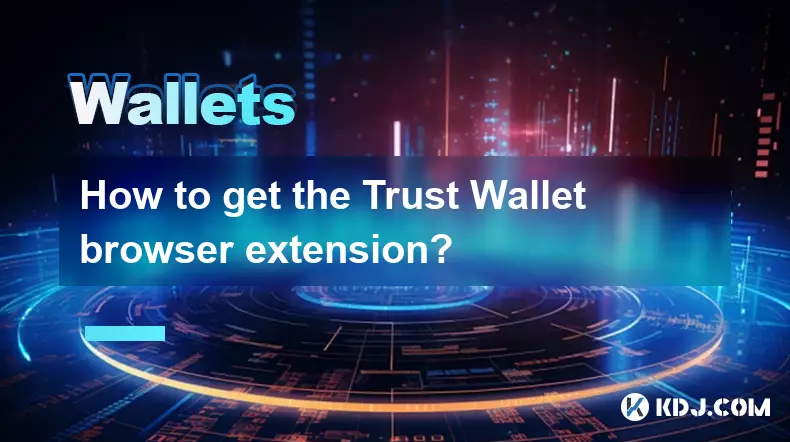
How to get the Trust Wallet browser extension?
Oct 01,2025 at 12:37am
How to Access the Trust Wallet Browser Extension1. Visit the official Trust Wallet website through a secure internet connection. Navigate to the downl...
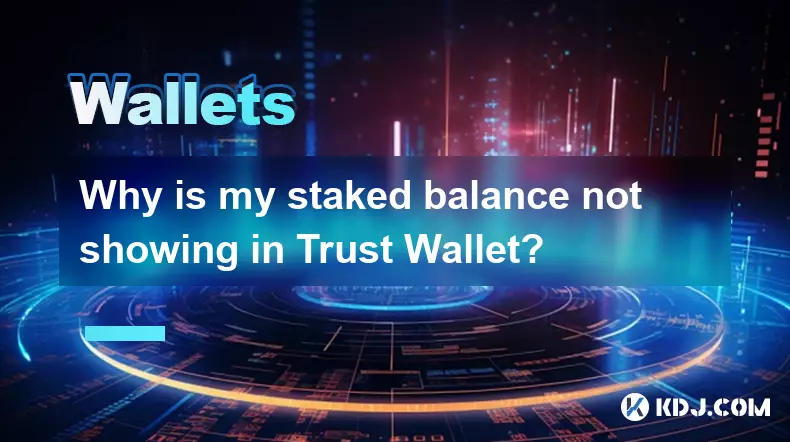
Why is my staked balance not showing in Trust Wallet?
Oct 01,2025 at 12:54am
Understanding Decentralized Exchanges in the Crypto Ecosystem1. Decentralized exchanges (DEXs) operate without a central authority, allowing users to ...
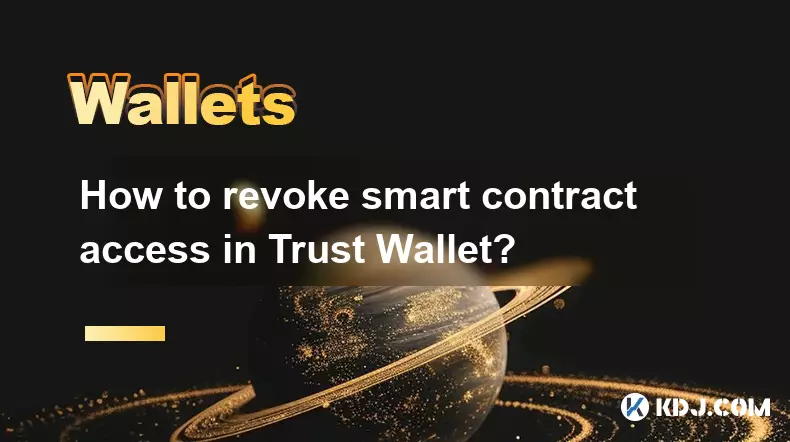
How to revoke smart contract access in Trust Wallet?
Oct 01,2025 at 12:54pm
Understanding Smart Contract Access in Trust Wallet1. Smart contracts are self-executing agreements built on blockchain networks, commonly used in dec...
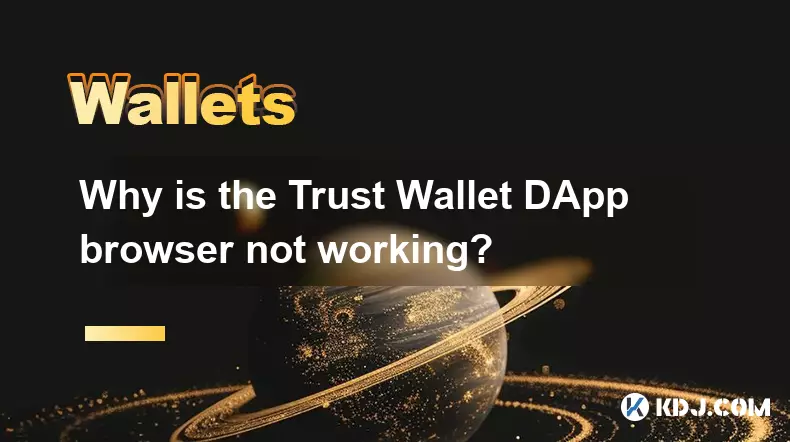
Why is the Trust Wallet DApp browser not working?
Oct 01,2025 at 05:36am
Common Causes of Trust Wallet DApp Browser Issues1. The DApp browser within Trust Wallet may fail to load due to connectivity problems. A weak or unst...

Why is my crypto not appearing in Trust Wallet after a transfer?
Oct 01,2025 at 04:36am
Common Reasons Your Crypto Doesn’t Appear in Trust Wallet1. The transaction is still pending on the blockchain. Blockchain confirmations can take time...
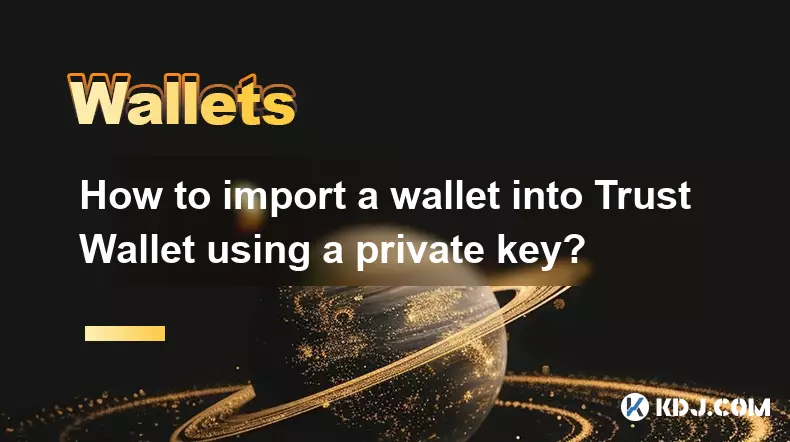
How to import a wallet into Trust Wallet using a private key?
Oct 01,2025 at 09:54am
Understanding Wallet Import via Private Key in Trust Wallet1. Trust Wallet allows users to import existing cryptocurrency wallets using a private key,...

How to get the Trust Wallet browser extension?
Oct 01,2025 at 12:37am
How to Access the Trust Wallet Browser Extension1. Visit the official Trust Wallet website through a secure internet connection. Navigate to the downl...

Why is my staked balance not showing in Trust Wallet?
Oct 01,2025 at 12:54am
Understanding Decentralized Exchanges in the Crypto Ecosystem1. Decentralized exchanges (DEXs) operate without a central authority, allowing users to ...

How to revoke smart contract access in Trust Wallet?
Oct 01,2025 at 12:54pm
Understanding Smart Contract Access in Trust Wallet1. Smart contracts are self-executing agreements built on blockchain networks, commonly used in dec...

Why is the Trust Wallet DApp browser not working?
Oct 01,2025 at 05:36am
Common Causes of Trust Wallet DApp Browser Issues1. The DApp browser within Trust Wallet may fail to load due to connectivity problems. A weak or unst...

Why is my crypto not appearing in Trust Wallet after a transfer?
Oct 01,2025 at 04:36am
Common Reasons Your Crypto Doesn’t Appear in Trust Wallet1. The transaction is still pending on the blockchain. Blockchain confirmations can take time...

How to import a wallet into Trust Wallet using a private key?
Oct 01,2025 at 09:54am
Understanding Wallet Import via Private Key in Trust Wallet1. Trust Wallet allows users to import existing cryptocurrency wallets using a private key,...
See all articles










































































